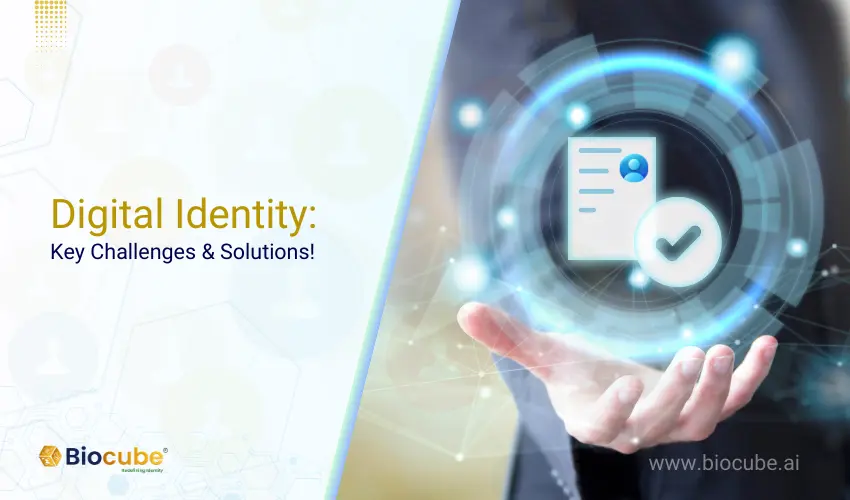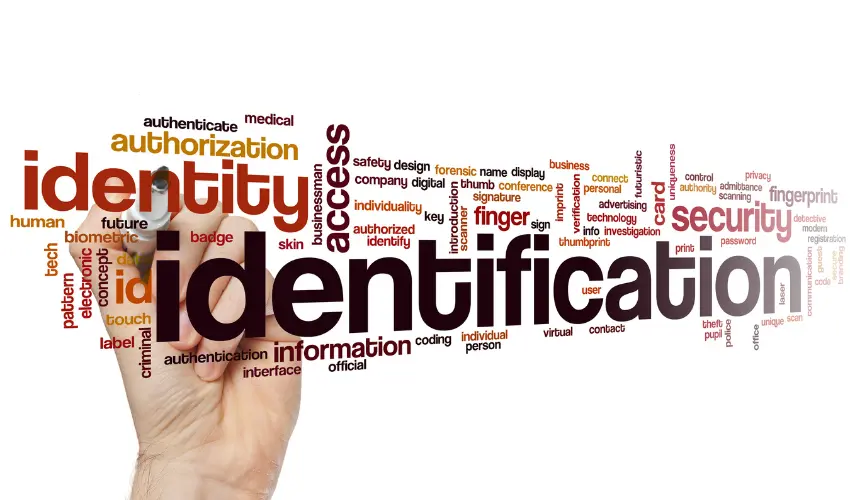
Digital Identity Management: Digital identities have become a common way of receiving access and authentication to accounts and workplaces. No longer are they new to the world, as our online identities are present in our banks, social media sites, attendance and access management systems, and government identities.
The world also revolves around digital identities, from onboarding at airports to alerting authorities after recognizing a person of interest or on a watchlist, using face biometrics as digital identities.
According to a report, the virtual identities solution market is witnessing staggering growth, from $28.0 billion in 2022 to $37.7 billion in 2024. Even though these have become crucial to businesses, a few challenges persist in managing them, such as security and privacy concerns, regulatory hurdles, system integrations, etc.
Table of Contents
What is Digital Identity?
A digital identity is a representation of an individual, organization, device, or any other entity in an online space, like a social media platform, app, website, etc., called a digital identity. For people, it often encompasses biometrics, personal info (Name, DOB, Age, Nationality, etc.), identity proofs, and other attributes.

What is Digital Identity Verification?
In our fast-paced world, it has become important to vet a person’s credibility to avoid onboarding people on a watchlist, suffering financial losses, and experiencing loss of trust. Digital identity verification is a process of ensuring that the correct person is looping into the system.
Moreover, this method refrains individuals from using fake identities for purposes like money laundering, terrorist financing, crossing territories illegally, etc. Today, Optical Character Recognition can help to prefill information from a document, whereas liveness detection can ensure that the uploaded document is genuine.
Also Read | Top 3 Identity Verification Trends of 2024
Banks, insurance companies, and financial institutions are using these two technologies to open accounts, along with face biometrics, as they are unique and more secure than other ID verification methods.
The Key Challenges with Digital Identities
The penetration of deep fakes is posing a serious threat to digital identities. It is resulting in financial and credibility loss and granting access to sensitive information, which can create an even larger problem for organizations. Understanding the essential challenges with online identities and resorting to new-age solutions would help resolve these issues and strengthen security while uplifting user convenience.
Data Security and Privacy
The rise in identity theft and associated data breaches has become a serious concern. In 2022, the Federal Trade Commission (FTC) received 441,822 complaints for credit card fraud and 57,877 complaints for government documents/benefits fraud. Stricter compliances, frequent audits, and a shift towards next-gen technology, such as contactless biometrics, liveness detection, multi-factor authentication, etc., have become important to ensure data security and privacy.
Frequently Changing Compliances and Regulations
Another major challenge in managing digital identity is the continuous change in compliance and regulatory protocols. Moreover, certain aspects come later into the limelight and pose a serious threat to individuals. To add to this burden, organizations need large investments to adapt to the changes suggested under the new framework with regular, systematic updates.
Moreover, MNCs must adjust to the regional norms, which makes it even more strenuous. Also, the country-wise identity framework for KYC verification includes Anti Money Laundering (AML), Politically Exposed Persons (PEPs), sanction checks, and others, making it even more challenging for MNCs to adapt to multiple norms and keep tabs on them.
No or Low Standards of Protecting IDs
Passwords are often used in Identity and Access Management (IAM) systems to unlock access to digital accounts. Moreover, many organizations use Single Sign-On (SSO), which means that once the account is accessed, the person can use multiple apps or websites linked to that account on a single platform.
It might seem convenient, but it’s like offering unlimited access on a platter to a cybercriminal if the account gets hacked. Organizations do understand this and, therefore, incorporate Multi-Factor Authentication (MFA) as a safety measure.
However, if a user’s second and only verification method is answering a security question, it still makes the account vulnerable. In an article published by Mastercard, a report mentioned that weak or stolen passwords were the reason for nearly 80% of data breaches. Therefore, no and low ID protection norms have become a serious problem.
One Size Might Fit All – One Solution to Resolve All Identity Challenges

The demand for passwordless solutions such as biometrics that are unique to an individual and challenging to replicate has become crucial. These solutions can also resolve the threats linked to data security and privacy and compliance and regulations.
Moreover, contactless biometric solutions can eliminate the need to remember identity credentials or carry proof of identity, as it is always with you. Organizations have understood the fact that biometrics prevent unauthorized access.
Additionally, adding more than one biometric layer and liveness detection can make it even more challenging for cybercriminals to duplicate identities and misuse access, as the system would flag attempts in real-time and alert the authorities.
Conclusion
Virtual identities have become the norm, but they come with a set of challenges. Moreover, today, skipping them is no longer a choice, as even acquiring or changing specifications in government proofs requires creating an ID.
Employees across industries have accounts on various government platforms, social media sites, banking apps or websites, and other places. However, virtual identities come with the risk of data and privacy concerns, adapting to regulations and compliances, and low ID protection standards, among many other problems.
However, contactless biometrics have become a game changer, especially for organizations, as they help to meet all the criteria and enhance the end-user experience. So, they have become a one-stop solution to identity registration, verification, and authentication challenges.

FAQs
What is digital identity management?
Digital identity management involves the creation, verification, and maintenance of digital identities for users, ensuring secure and efficient access to online services.
What are the key challenges in digital identity management?
The primary challenges include ensuring security, maintaining data privacy, managing user authentication, preventing identity theft, and integrating with various systems and platforms.
What solutions can address these challenges?
Solutions include multi-factor authentication, blockchain technology, biometric verification, robust encryption, and continuous monitoring and auditing of identity management systems.
How can biometric verification help?
Biometric verification enhances security by using unique biological traits (like fingerprints or facial recognition) that are difficult to forge, providing an additional layer of protection.
Why is data privacy a significant concern?
Data privacy is crucial because digital identities often contain sensitive personal information, making them prime targets for cyberattacks and data breaches.
